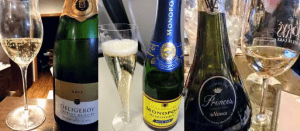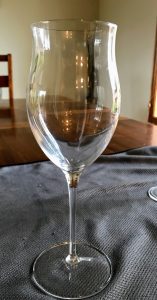A few thoughts on Bursting Bubbles: A Secret History of Champagne and the Rise of the Great Growers by Robert Walters.
Overview

Robert Walters is an Australia wine merchant and importer who over the years became bored and jaded with the Champagnes produced by the large négociant houses. A chance tasting of Larmandier-Bernier’s Terre de Vertus reignited his passion for the wines of the region. This book recounts his trek throug Champagne visiting several grower producers like Anselme Selosse, Francis Egly, Pascal Agrapart, Jérôme Prévost and Emmanuel Lassaigne.
Throughout the book, Walters gets his vino-mythbuster on and debunks 10 common myths relating to Champagne such as the fact that Dom Perignon didn’t invent Champagne (he actually spent his entire career trying to get rid of the bubbles), placing a spoon in a Champagne bottle does not help retain the bubbles, smaller bubbles are not a sign of higher quality and more.
I didn’t always agree with some of his extrapolations such as when Walters tries to dispel the myth that blending Champagne makes “a sum better than its parts” (Myth VI). I understand his point that blending wines made from vineyards scattered across a large region negates any chance of terroir showing through. However, I do think something should be said for the skill of the winemaker in using a palette with many different colors of paint to create an evocative picture. While you can argue that the large négociant houses are sourcing from too vast of an area, I think few would argue that producers in Bordeaux are not showing terroir in their blends.
Wine or Sparkling Wine?
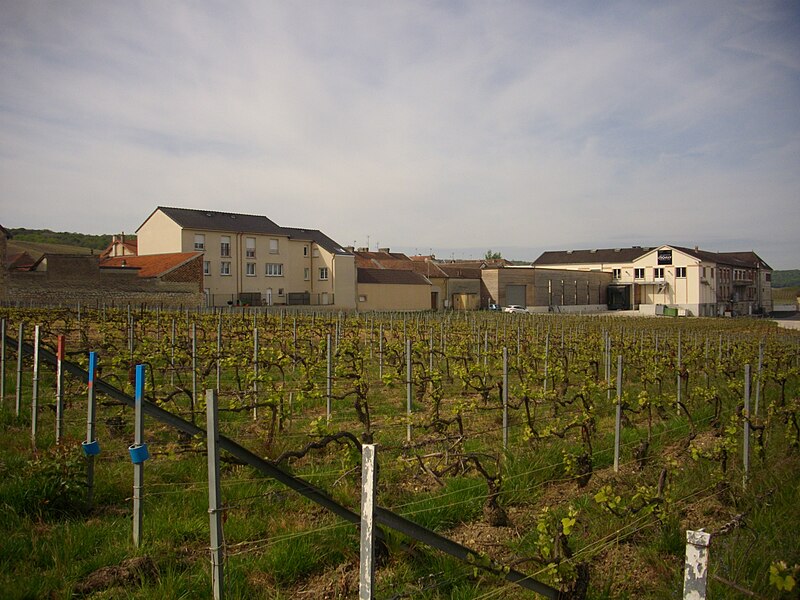
Vineyards in the Grand Cru village of Mailly.
The overriding theme of the book is that Champagne should be considered a wine first and a sparkling wine second. Walters contends that many in the wine industry give Champagne a free pass and do not judge it critically on the same standards that we judge other great wine regions.
In contrast to the work of the small “great growers” he highlights, many producers in Champagne practice viticulture and winemaking practices that would be considered anathema in fine wine estates across the globe–such as the extensive use of chemicals, excessively high yields, harvesting unripe grapes and mass adulteration in the winery.
Walters makes a lot of opinionated arguments and critical points that will certainly chafe some wine lovers the wrong way. But they do give you reasons to think.
Some Things I Learned
The journey through many of the smaller villages of Champagne and their different terroirs was very fascinating. While it wasn’t an academic exploration (like the Champagne section in The Wine Atlas), it was still interesting. The chapters (beginning with Part XVI) in the Aube (Côte des Bar) were my favorite. This region is considered the backwoods cousin of Champagne and is often ignored in favor of the more prestigious regions of Côte des Blancs, Montagne de Reims and Vallée de la Marne yet it may actually end up having the best terroir in all of Champagne. It certainly seems to be a hotbed for dedicated growers with a chip on their shoulders that are raising the bar on what quality Champagne is.
Trash In the Vineyard?

This doesn’t really jive with the luxury image of Champagne.
The most horrifying idea that Bursting Bubbles introduced me to was the concept of “boues de ville“, the (thankfully now discontinued) practice of literally using city garbage to fertilize the vineyards of Champagne (Part VI). The thought of broken glass, batteries, plastic milk jugs and soda cans littering the vineyards of some of the most prestigious wines in the world made my jaw dropped and rushed me to Google where….yeah, this apparently happened from the 1960s till it was outlawed in 1998.
Getting geeky, I loved reading about Selosse’s “perpetual blend” inspired by the solera system of Sherry (Part X). For several of his Champagnes, Selosse keeps them in casks that he “tops up” with the new harvest every year while only bottling a small portion. So for example, the blend for his Champagne Substance started in 1986. This means that his recent release that was disgorged 05/2016 theoretically had wines from 19 vintages.
Walters’ cryptic snarkiness about a négociant running a tourist trap on the Avenue de Champagne in Epernay (which he wouldn’t name) had me playing detective to find out the identity of this mysterious Champagne house that supposedly made wines that taste like “battery acid plus sugar” (Part V).
Wines I Want to Try Because of This Book
One of the more enjoyable sections of Bursting Bubbles was when Walters dispelled the myth that Champagne is made from only 3 grapes (Myth V). I knew that there were other grapes permitted beyond Chardonnay, Pinot noir and Pinot Meunier but finding Champagnes that actually featured these obscure grapes was like trying to find a unicorn at the Kentucky Derby. But throughout the book Walters name drops several of these unicorns that I’m hunting for.

I had this Pierre Gerbais at a Champagne tasting featuring over 20 bottles and this was my runaway WOTN. It makes me eagerly want to find more Pinot blanc Champagnes.
Pascal Agrapart ‘Complantee’ – from the Grand Cru village of Avize, this wine has the 3 traditional grapes as well as Arbanne, Pinot blanc and Petit Meslier.
Aurelian Laherte ‘Les 7’ – This wine gets even geekier with adding Fromenteau (probably Pinot gris) to the 6 grapes used in the Agrapart.
Cedric Bouchard ‘La Boloree’ – 100% Pinot blanc from 50+ year old vines.
Vouette et Sorbee ‘Texture’ – 100% Pinot blanc with zero dosage.
Aubry ‘Le Nombre d’Or’ – a blend of six grape varieties with 3 g/l dosage.
Pierre Gerbais L’Originale – 100% Pinot blanc from vines planted in 1904. (SCORE! After getting this book and making this list, I had a chance to try this wine courtesy of a friend. You can read my 60 Second Review of it here.)
New Reading Recommendations I Got From This Book
One of my favorite things to do with books is to scour their references and notes section in the back to find new reading materials. Sometimes the author will make a direct recommendation in the book, as Walters did (in ‘Disclaimers’) for people looking for Champagne producer guides. The new additions that Bursting Bubbles added to my “To Read” list are:
Peter Liem’s Champagne [Boxed Book & Map Set]: The Essential Guide to the Wines, Producers, and Terroirs of the Iconic Region
Michael Edwards’ The Finest Wines of Champagne: A Guide to the Best Cuvées, Houses, and Growers
Tyson Stelzer’s The Champagne Guide 2018-2019: The Definitive Guide to Champagne
Becky Sue Epstein’s Champagne: A Global History
Thomas Brennan’s Burgundy to Champagne: The Wine Trade in Early Modern France
Kolleen M. Guy’s When Champagne Became French: Wine and the Making of a National Identity
Michel Bettane & Thierry Desseauve The World’s Greatest Wines
Andrew Jefford’s The New France: A Complete Guide to Contemporary French Wine
Gérard Liger-Belair’s Uncorked: The Science of Champagne
Final Thoughts
Regular readers know that I have a strong affinity for wines made by small, family-owned wineries. In my recent review of some LVMH (Louis Vuitton Moët Hennessy) Champagnes, I started it with the quote “You buy the big houses for the name, you buy the growers for the wine” , so I went into reading this book expecting to have a lot of sympathy with Robert Walters’ view.
But I found myself disagreeing with him more often than I agreed.
Worth Pondering Though
I don’t agree with his view that the use of dosage distorts the essence of “true Champagne” and that “toasty, biscuity” flavors are superficial, cosmetic notes and are not marks of “great Champagnes”. (Part VII).
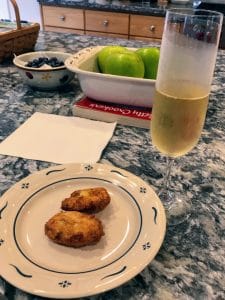
I do agree that great Champagne should go with food.
This 2002 Lanson Noble Cuvee Blanc de Blancs spent 14 years aging on the lees and was bloody fantastic with Portuguese Pastéis de Bacalhau (fried salted cod).
I don’t agree that the bubbles in Champagne “get in the way” of appreciating the true quality of Champagne. That came from a quote of grower Cédric Bouchard (Part XX) and while, in the Epilogue, Walters says that he doesn’t agree with Bouchard that bubbles get in the way of terroir, he still highlights Bouchard point to say that, in his opinion, a “great Champagne must be a great wine first, and a great Champagne second.” This statement follows an entire book where he advocates serving Champagne at warmer temperatures, in large wine glasses and even decanted, while touting the positive benefits of minimizing the bubbles in Champagne.
In debunking the myth that flutes are the proper vessels for Champagne (something advocated by folks like Wine Enthusiast’s Jameson Fink), Walters says:
If you have a real wine in your glass, the kind of wine that I am advocating for in this book, it deserves a real wine glass that will showcase the quality that is on offer. — Robert Walters (Myth VIII)
What Makes Great Champagne?
In Walters’ view, great Champagnes are ones that can be served as still wines even after they’ve lost their bubbles. While I will confess that I’m curious enough to experiment more with intentionally decanting and degassing Champagnes, I can vividly recall numerous bottles of gorgeous Champagnes that I’ve enjoyed that tasted horrible warm or the day after when the bubbles were gone. The fact that those wines did not taste good as still wines is not reason enough for me to dismiss them as “not great Champagnes”.
While I agree with Walters’ main argument that we should judge Champagne and Champagne producers on par with how we judge other great wines in the world, I do not think it is required to shelve the uniqueness of Champagne to do so. The bubbles give me pleasure. Ultimately, that is what I look for in any wine–does it give me pleasure drinking it?
There were other areas that I found common ground in Bursting Bubbles. I fully support exploring the terroir of single vineyards and single village wines, instead of just cranking out millions of bottles of mass regional blends.
Top Shelf Gummy Bears Though…

There is so much Dom Perignon flooding the market that they are literally turning it into gummie bears.
It’s hard to see this happening with a Chateau Margaux or a Corton-Charlemagne.
An astute point that Walters make is that in most great wine regions, a mass regional blend would be at the bottom of the quality pyramid like an AOC Bourgogne or Bordeaux Supérieur. But in Champagne, you can make 5 million bottles a year of Dom Perignon sourced from hundreds of vineyards across at least 21 villages and it is called a “prestige cuvee”. Wine drinkers should start thinking more critically about where their Champagne is coming from and who is making it.
So while I understand Walters’ point that “Champagne should be considered a wine first and a sparkling wine second”, I’m going to part ways with him when it comes to separating the sparkling from the wine.
I can easily find great Burgundy, great Bordeaux, great Rieslings and the like. The world is awash with great still wines. But when it comes to Champagnes, and yes, I believe there are great Champagnes, I don’t want my bubbles to burst.









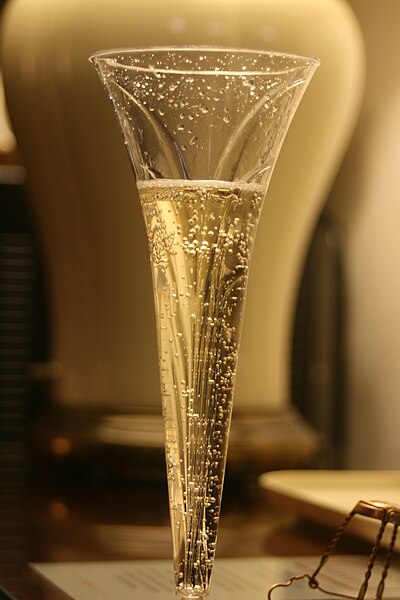 Did you ring in the New Years with a flute of bubbles?
Did you ring in the New Years with a flute of bubbles?